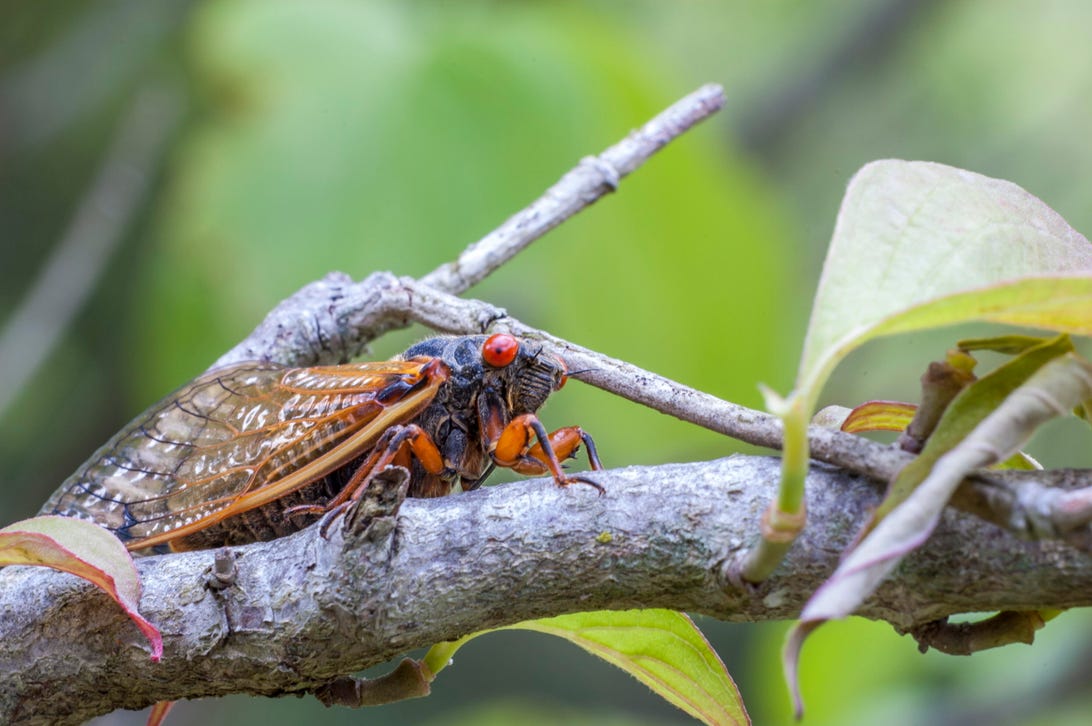[ad_1]

Periodical cicadas emerge from underground in the spring of their 13th or 17th year. Fifteen US states are about to see a whole lot of them.
Getty Images
Parts of the eastern United States are about to witness a buzz-worthy sight: billions of cicadas emerging from underground for the first time since 2004 to swarm outdoor spaces and share their loud collective mating calls.
Periodical cicadas, as they’re known, spend almost their whole lives a foot or two underground, living on sap from tree roots. Then, in the spring of their 13th or 17th year, mature cicada nymphs emerge for a short adult stage, synchronously and in huge numbers. Really huge numbers.
“They may amass … in parks, woods, neighborhoods and can seemingly be everywhere,” Michigan State University entomologist Gary Parsons explained in an MSU question and answer session on the phenomenon last year. “When they are this abundant, they fly, land and crawl everywhere, including occasionally landing on humans.”
The eastern United States is home to six species of periodical cicadas that emerge in different years.
This spring, it’ll be time for members of one of the largest broods of 17-year cicadas, known as Brood X, to burrow out from their subterranean hideouts and show off their black bodies and bold red eyes. Fifteen states will hear the romantic serenades of males in trees, trying to attract females: Delaware, Georgia, Illinois, Indiana, Kentucky, Maryland, Michigan, North Carolina, New Jersey, New York, Ohio, Pennsylvania, Tennessee, Virginia and West Virginia, as well as in Washington, DC.
The return of the cicadas typically starts around mid-May (though it could come earlier) and runs through late June and is, needless to say, a wild spectacle. Some people view the insect invasion as an annoyance, while others welcome it as a wonder of nature. Some in the latter category even travel around the US to cicada emergence areas to experience the sights and sounds annually. A free app called Cicada Safari, available for iOS and Android, lets the cicada-curious record periodical-cicada sightings to help scientists verify their lifecycles, as well as broods’ relationships to one another.
The bugs are harmless, Parsons stresses, and typically don’t come indoors, though they do gather on outside walls.
“The only way they could get inside is accidentally flying in through an open door or window, or because they had landed on a person who then carried them inside unnoticed,” Parsons says.
So why do so many cicadas make an appearance out at once? It’s thought that by emerging en masse, the bugs ward off predators so enough can live on to mate. Strength in numbers and all that.
The cicadas typically begin to come out when soil temperatures 8 inches (20 centimeters) underground reach 64 degrees Fahrenheit (18 degrees Celsius). “That seems to be the trigger that causes them all to emerge over a few days or weeks in one area,” Parson says. A warm rain often triggers their emergence.
Godspeed, Brood X.
[ad_2]
Source link